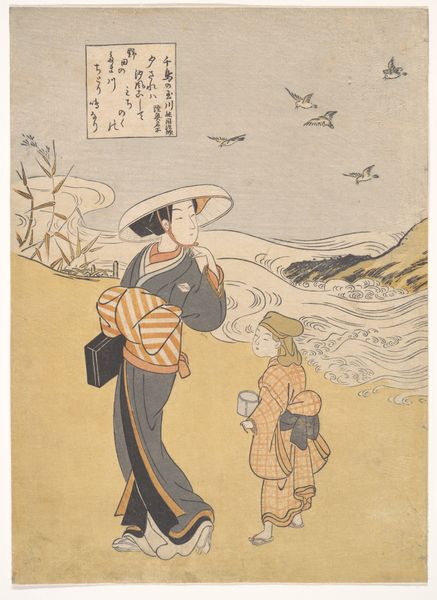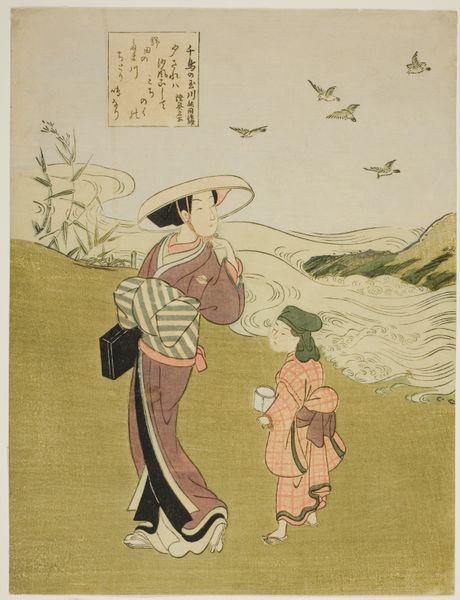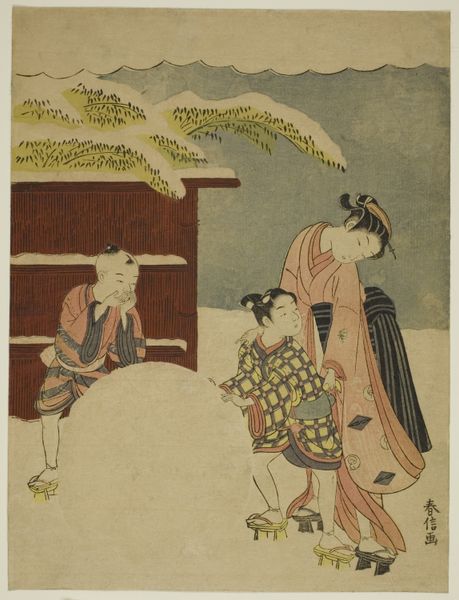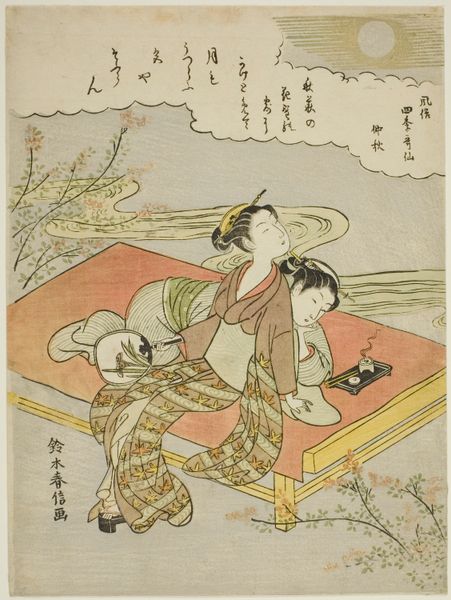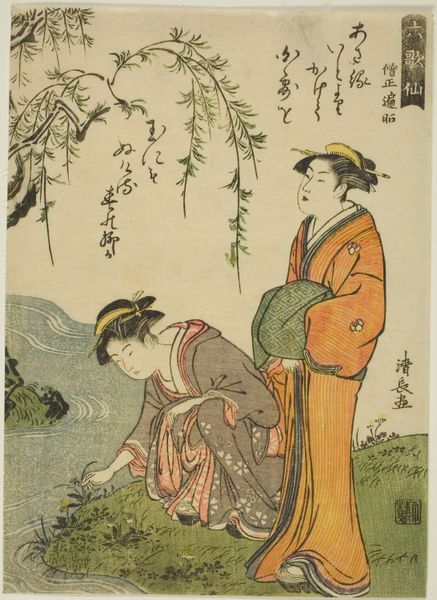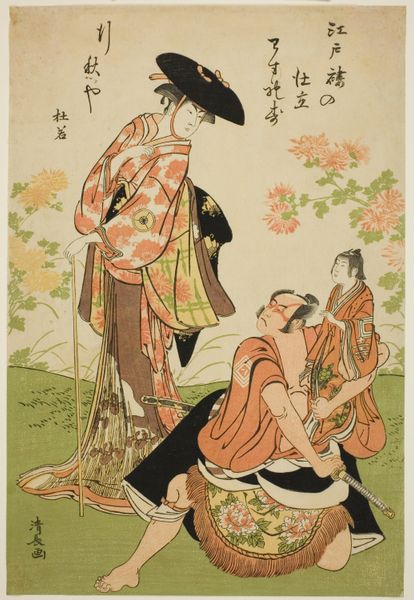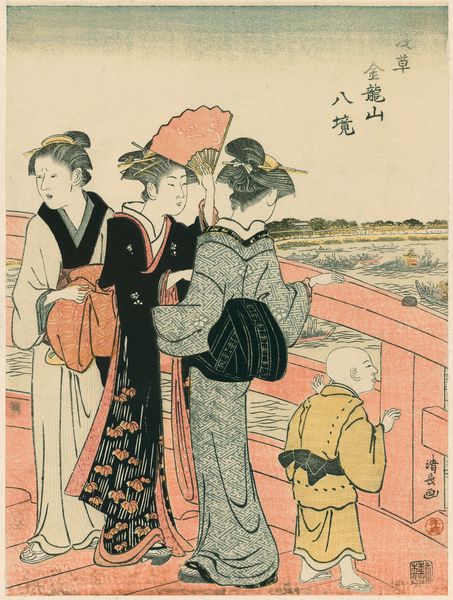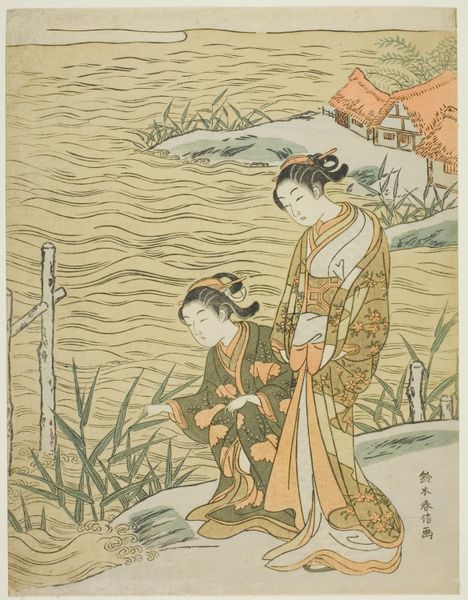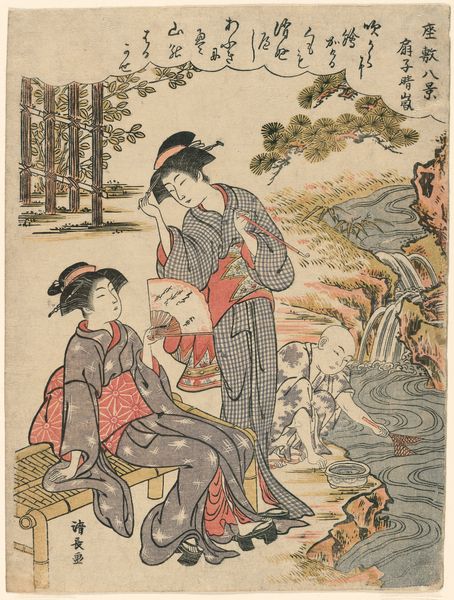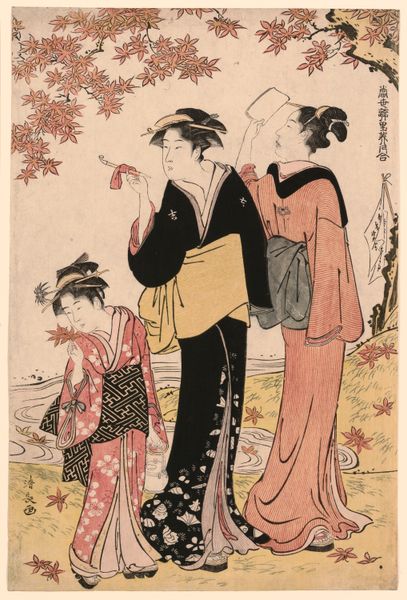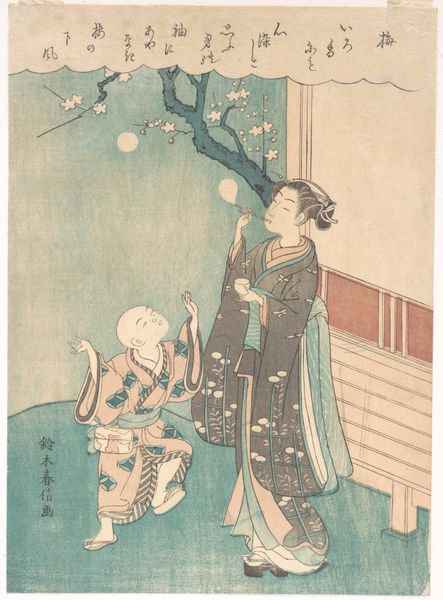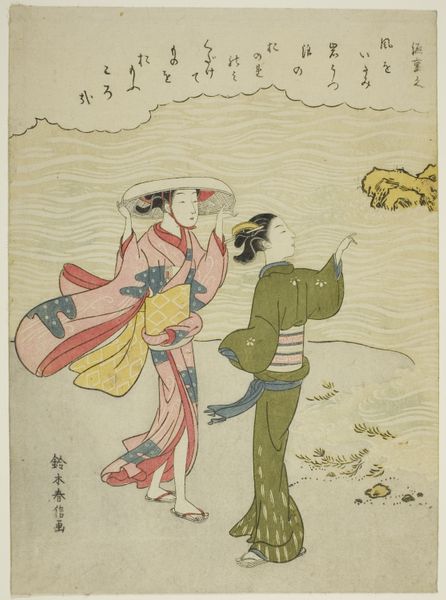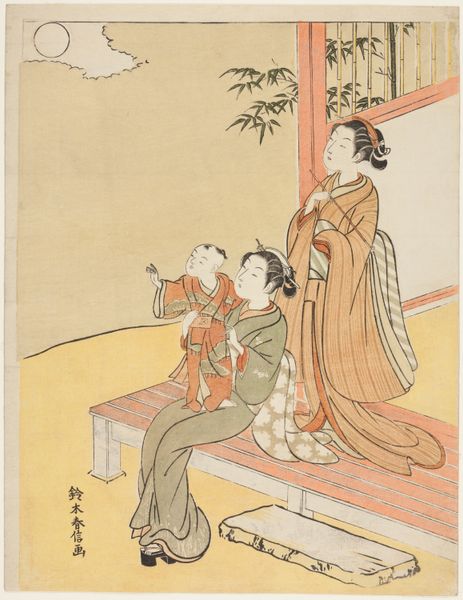
“The Jewel River of Plovers, a Famous Place in Mutsu Province,” from the series Six Jewel Rivers (Mu Tamagawa: Chidori no Tamagawa, Mutsu meisho) 1766
0:00
0:00
Dimensions: 10 7/8 x 8 in. (27.6 x 20.3 cm)
Copyright: Public Domain
Editor: This is "The Jewel River of Plovers, a Famous Place in Mutsu Province" by Suzuki Harunobu, created around 1766. It’s a woodblock print, and the colors are just so soft. There's a sense of everyday life depicted with these figures, and yet it’s idealized somehow. What can you tell me about the story within this scene? Curator: I see this print as a lens through which we can examine the cultural codes surrounding women in 18th-century Japan. Notice the woman's obscured face beneath the hat, the stylized landscape, and even the plovers in flight. These are potent signifiers. How do you read the interaction between the woman and the younger figure accompanying her? Editor: I see it as a depiction of a mother and child, but maybe that's too simple? Curator: It's a starting point. But let's consider the ukiyo-e tradition within the broader context of gender roles and expectations during the Edo period. The woman embodies ideals of beauty and decorum, yet her individuality remains somewhat concealed. How does that contrast with the image of the child, or with our contemporary ideas about female identity? Editor: That makes me consider their place in society more broadly. Almost like a staged performance of womanhood. And are the plovers a metaphor for freedom, perhaps? Curator: Exactly! The plovers might be representative of freedom or, maybe even a longing. What is so beautiful is the quiet resistance one may find within these socially circumscribed visual languages. It prompts us to consider intersectional narratives, even within seemingly placid scenes. Editor: It is interesting how something so beautiful can also spark questions about societal expectations. I’ll never look at these prints the same way again. Curator: Indeed. Art becomes a portal to examining the very structures that shape our perceptions, even across centuries and cultures.
Comments
No comments
Be the first to comment and join the conversation on the ultimate creative platform.
